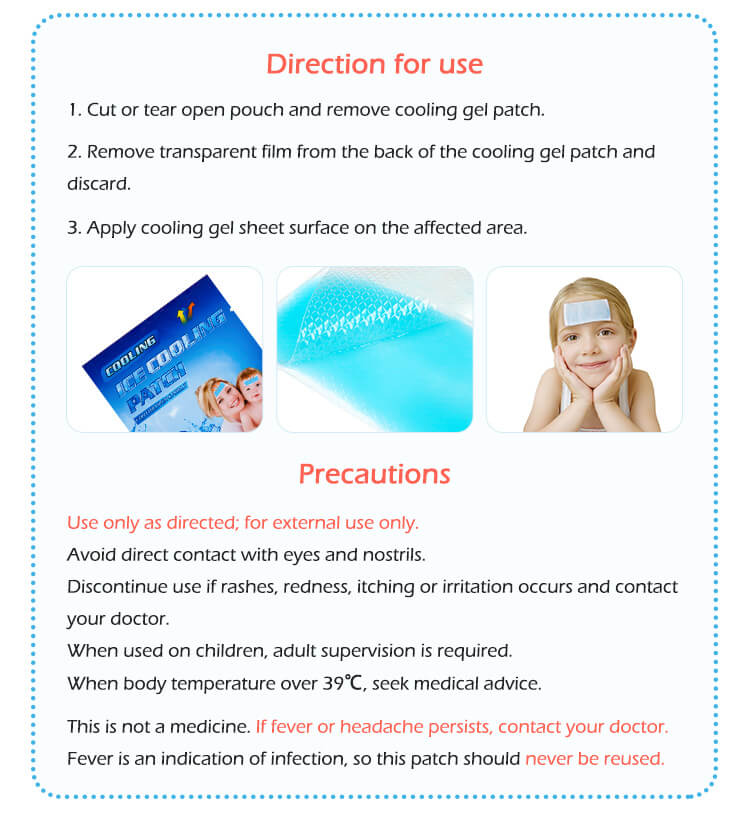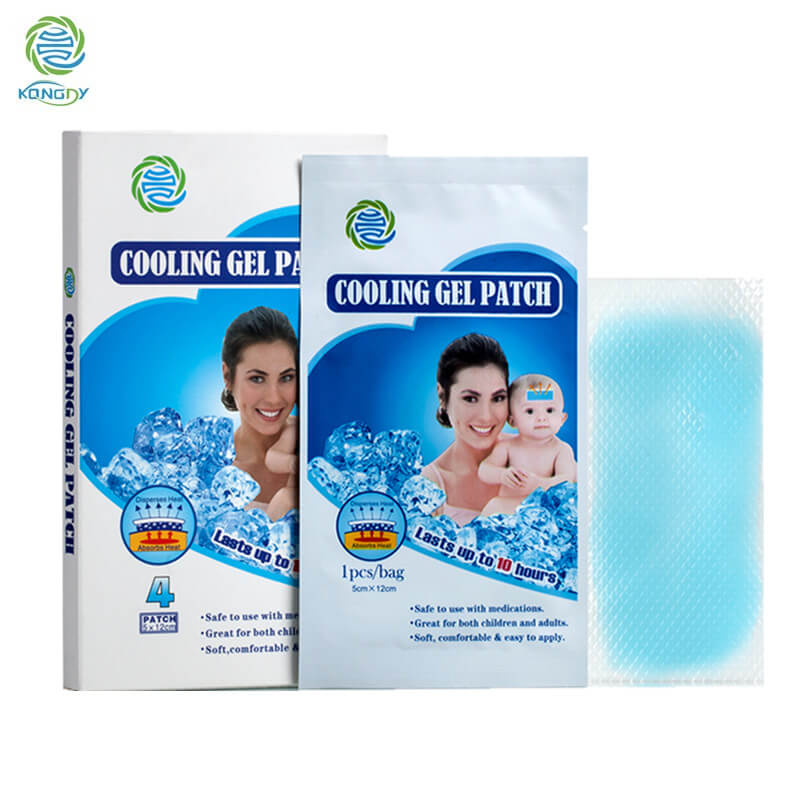How Does a Hydrogel Cooling Patches OEM Reduce Production Costs?
In today’s competitive healthcare and personal care market, brands are constantly searching for ways to lower production costs without sacrificing product quality. This is particularly true for products like hydrogel cooling patches, which have seen rising demand worldwide due to their effectiveness in fever relief, migraine management, sports recovery, and skincare.
One of the most strategic ways for brands to achieve cost efficiency is to partner with a hydrogel cooling patches OEM (Original Equipment Manufacturer). These specialized manufacturers have the infrastructure, expertise, and economies of scale that make production significantly more cost-effective than in-house manufacturing.
In this in-depth guide, we’ll explore how a hydrogel cooling patches OEM reduces production costs, the methods they use to improve efficiency, and why choosing the right hydrogel cooling patches manufacturer or supplier can help you gain a competitive advantage.

1. Understanding Hydrogel Cooling Patches and OEM Manufacturing
What are Hydrogel Cooling Patches?
Hydrogel cooling patches are adhesive sheets infused with a moisture-rich gel. They provide a cooling effect to help relieve discomfort caused by fever, headaches, sports injuries, or skin irritation. They are widely used in households, hospitals, and sports facilities due to their safety, convenience, and drug-free cooling.
What is a Hydrogel Cooling Patches OEM?
An OEM (Original Equipment Manufacturer) produces hydrogel cooling patches according to another company’s specifications, allowing brands to sell the product under their own label. This approach can take the form of Custom hydrogel cooling patches or Private Label hydrogel cooling patches, depending on the level of customization.
By outsourcing production to an OEM, brands can avoid heavy capital investment in manufacturing equipment, save labor costs, and shorten production timelines.
2. How a Hydrogel Cooling Patches OEM Reduces Production Costs
2.1. Economies of Scale
Large-scale production is one of the biggest advantages of working with a hydrogel cooling patches manufacturer. OEM facilities often produce millions of patches per month for multiple brands. This bulk production reduces the per-unit cost of raw materials, packaging, and shipping.
Example:
If you purchase hydrogel raw material in small batches for in-house production, the cost per kilogram may be 20% higher compared to an OEM that buys in truckloads directly from chemical suppliers.
2.2. Optimized Supply Chain Management
A hydrogel cooling patches supplier often has long-standing partnerships with raw material suppliers, adhesive manufacturers, and packaging companies. This enables them to negotiate better prices and ensure a consistent supply, reducing the risk of production delays.
Cost-saving factors:
Bulk purchasing discounts
Lower transportation costs from centralized sourcing
Reduced material wastage due to optimized ordering
2.3. Specialized Production Equipment
Manufacturing hydrogel cooling patches requires:
Gel mixing and coating machines
Laminating and die-cutting systems
Automated packaging lines
Setting up this equipment in-house is expensive and requires ongoing maintenance. OEMs already own and maintain these machines, which means you only pay for the finished product — not the capital expenditure.
2.4. Skilled Labor and Expertise
A reputable hydrogel cooling patches OEM employs trained technicians, quality control inspectors, and R&D staff. Their expertise ensures efficient production with minimal errors, reducing defective batches and rework costs.
By leveraging specialized labor, brands save:
Recruitment and training costs
Overtime and labor inefficiency costs
Losses from product recalls due to quality issues
2.5. Reduced Overhead Expenses
Running a production facility involves costs for electricity, water, facility rent, equipment maintenance, waste disposal, and compliance with safety regulations. OEMs spread these expenses across multiple clients, which significantly lowers the overhead allocated to each brand.
2.6. Lean Manufacturing Processes
Leading hydrogel cooling patches manufacturers adopt lean manufacturing principles to eliminate waste at every stage:
Material waste reduction through precise coating technology
Energy savings with advanced, energy-efficient machinery
Time savings by minimizing setup changeovers between production runs
2.7. Shorter Time-to-Market
By outsourcing to an OEM, your brand can launch products faster. This speed not only reduces storage and warehousing costs but also allows you to start generating revenue sooner — which improves cash flow.
2.8. Lower R&D Costs
Developing a high-performance hydrogel cooling patch formula in-house is costly. OEMs already have Custom hydrogel cooling patches formulas that can be adapted for your brand. This reduces the need for expensive lab work, ingredient testing, and pilot runs.
2.9. Packaging and Design Efficiency
OEMs can source Private Label hydrogel cooling patches packaging in bulk, lowering printing costs and ensuring high-quality presentation. Many OEMs also provide in-house graphic design services, eliminating the need to hire a separate design agency.
2.10. Regulatory Compliance Expertise
Complying with global standards like CE, FDA, or ISO can be expensive. A hydrogel cooling patches manufacturer with existing certifications can help you avoid lengthy (and costly) compliance processes by producing products that already meet market requirements.
3. Key Considerations When Choosing a Cost-Efficient Hydrogel Cooling Patches OEM
Not all OEMs offer the same level of cost savings. Here’s what to look for:
Production Capacity – Can they handle your current and future order volumes?
Material Sourcing – Do they work with reputable, cost-effective suppliers?
Quality Control Systems – Low defect rates mean lower waste and rework costs.
Customization Options – Flexibility in Custom hydrogel cooling patches ensures market differentiation.
Global Shipping Capability – Efficient logistics reduce transportation costs.
Regulatory Knowledge – Faster compliance approvals mean earlier sales.
4. Why Cost Savings Should Not Compromise Quality
While reducing costs is important, sacrificing quality can damage your brand reputation and lead to returns or customer dissatisfaction. The right hydrogel cooling patches supplier will balance cost efficiency with product performance, safety, and compliance.
Pro Tip: Always request product samples, quality test reports, and factory audits before signing a contract.
5. The Competitive Advantage of Partnering with the Right OEM
A cost-efficient OEM partnership allows your brand to:
Offer competitive pricing in the market
Increase profit margins
Reinvest savings into marketing and product development
Focus on sales and brand building instead of production management
By leveraging a hydrogel cooling patches OEM, you essentially gain a ready-made manufacturing department — without the capital risks.
6. Final Thoughts
Choosing the right hydrogel cooling patches manufacturer is not just about finding the lowest price; it’s about securing a long-term partner who can deliver consistent quality while keeping your production costs low. The ideal OEM combines:
Economies of scale
Efficient supply chain management
Advanced technology
Skilled labor
Compliance expertise
If you strategically partner with a trusted hydrogel cooling patches supplier, you can enjoy both cost efficiency and superior product quality — a winning combination in today’s competitive healthcare product market.
7. Related Questions and Answers
Q1: What’s the difference between a Hydrogel Cooling Patches OEM and a Private Label Hydrogel Cooling Patches manufacturer?
A1: An OEM creates products based on your specifications, while a private label manufacturer offers pre-formulated products that you can brand as your own.
Q2: Can Custom Hydrogel Cooling Patches be more expensive than standard versions?
A2: Custom patches may have higher initial development costs, but when produced in bulk by an OEM, the per-unit cost can be competitive.
Q3: How do I verify a Hydrogel Cooling Patches Supplier’s quality standards?
A3: Request certifications like ISO 13485, CE, or FDA registration, along with product test reports and factory audit results.
Q4: Do OEMs help with international shipping?
A4: Many OEMs have logistics partners for cost-effective global distribution, which can further reduce transportation costs.
Q5: Is it possible to switch OEMs if costs rise?
A5: Yes, but it’s important to review your contract terms and ensure the new OEM can match quality and compliance standards.






